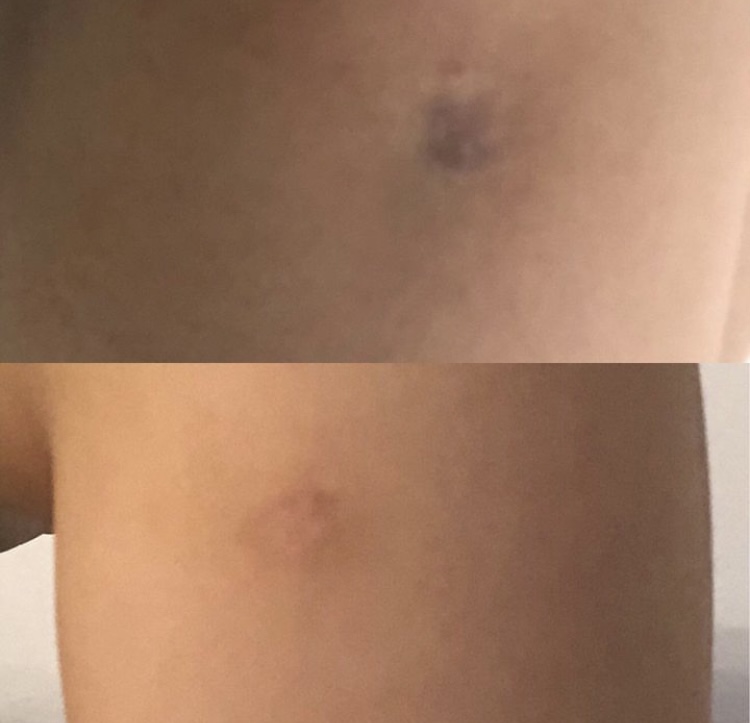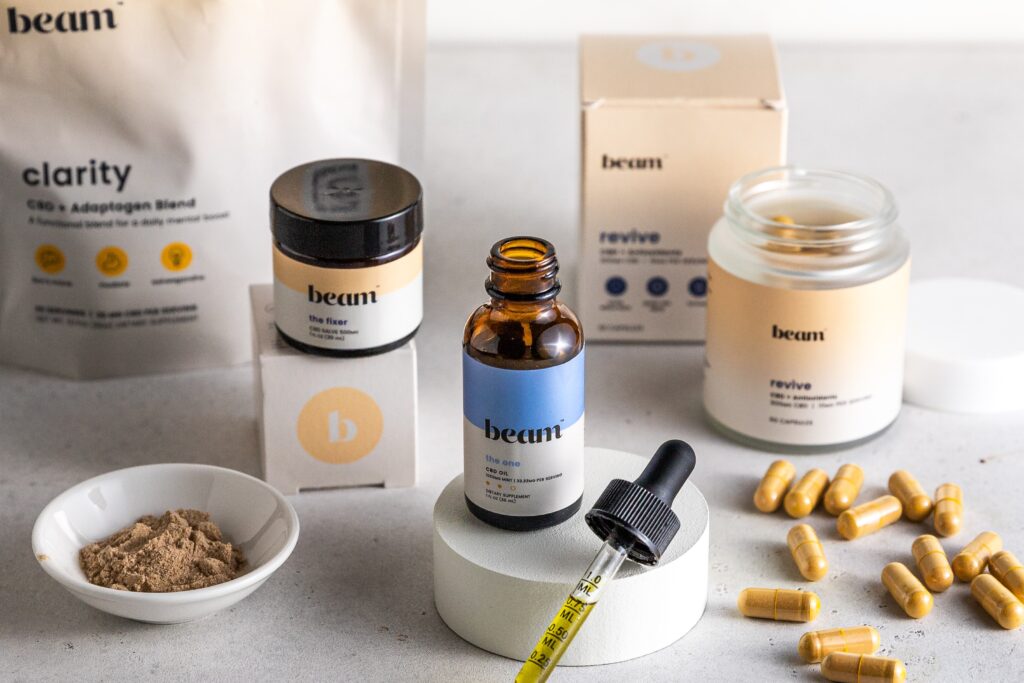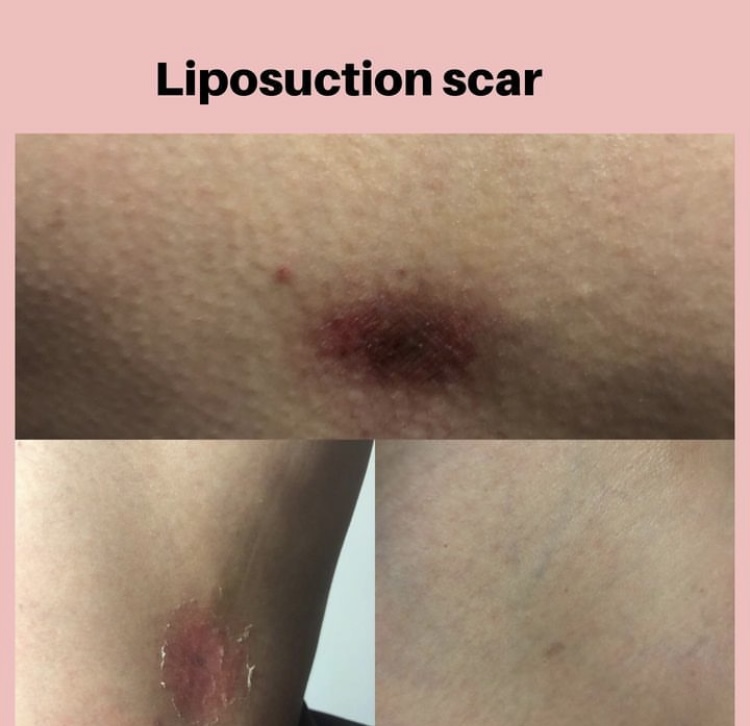In this blog post, we’ll take a closer look at the issue of liposuction scars, including what causes them, how to prevent them, and what treatments are available to minimize their appearance. Liposuction is a popular cosmetic procedure that helps remove excess fat from various parts of the body. However, while the results of the surgery can be highly satisfying, the procedure is not without risks, and one of the potential complications of liposuction is scarring. Liposuction can produce desirable results, it can also leave behind visible scars if it is not performed properly. If you are considering liposuction, you should be aware of the potential risks associated with it, including the development of liposuction scars.
Table of Contents
What are liposuction scars?
Liposuction scars are the result of the body’s natural healing process after undergoing a liposuction procedure. These scars are caused by the incisions made during the liposuction process. Depending on the type of liposuction procedure, the scar may vary in size, shape and location. In general, liposuction scars are relatively small and typically fade away over time. However, it is important to note that some liposuction scars can be more visible than others.
It is also important to know that different factors can affect how prominent or noticeable your liposuction scars will be. These factors include your skin type, age, ethnicity, and the amount of fat removed. For instance, if you have darker skin or if you are older, then your liposuction scars may be more visible than those of someone with lighter skin or who is younger. Additionally, the more fat that is removed during the procedure, the larger and more visible the scar might be.

Causes of Liposuction Scars
Liposuction is a surgical procedure that involves making small incisions in the skin through which a cannula is inserted to remove fat from the targeted area. As with any surgery, the incisions made during liposuction can leave scars.
The size and location of the scars will depend on the technique used for the procedure, the amount of fat removed, and the patient’s individual healing process. In general, the larger the cannula used and the more aggressive the suction, the greater the chance of scarring.
Here are some potential causes of liposuction scars:
- Incisions: During liposuction, small incisions are made in the skin through which a cannula (a thin tube) is inserted to remove the excess fat. These incisions can leave scars, although they are typically small and well-hidden.
- Healing process: The healing process after liposuction can also contribute to the formation of scars. Scar tissue is a natural part of the healing process and is formed as the body repairs itself. The extent of scar formation can vary depending on the individual’s healing process and the extent of the surgery.
- Infection: In rare cases, an infection can occur after liposuction surgery. Infection can lead to more visible and prominent scars.
- Poor wound care: Proper wound care is crucial to ensure that scars heal well after liposuction. Failure to follow post-operative care instructions can increase the likelihood of scarring.
- Skin type: The type of skin an individual has can also affect the appearance of scars. People with darker skin tones may be more prone to keloid scarring, which is a type of raised scar that extends beyond the boundaries of the original incision.
How to Prevent Liposuction Scars?
Liposuction scars are one of the most common side effects of this cosmetic surgery procedure. To avoid these scars, it is important to choose a qualified and experienced plastic surgeon who is familiar with the latest techniques. Additionally, you should inquire about the type of technique that the doctor plans to use for your liposuction procedure.
The size and shape of the incision site can play a role in how visible any scarring may be. The smaller the incision site, the less visible the scarring will be. This is why it is important to choose a plastic surgeon who is experienced in performing liposuction procedures, as they will be able to make the incision site as small as possible to minimize scarring.
It is also important to maintain a healthy lifestyle after liposuction surgery. Eating a balanced diet and exercising regularly can help keep skin tight and toned, which in turn helps minimize the risk of developing any scars after surgery. Additionally, avoiding smoking, tanning beds, or any other activities that could potentially cause damage to your skin can help reduce the chances of developing liposuction scars.
Finally, you should follow all instructions provided by your doctor for recovery after surgery. This includes proper wound care, avoiding strenuous activity, and not picking at or scratching the area where the liposuction was performed. All of these steps can help ensure that the scarring is minimized and that the area heals properly.
What to do if you get them
If you get liposuction scars, the best thing you can do is to see a doctor as soon as possible. A doctor can give you advice on how to best treat your scars, as well as provide any necessary medical treatments.
In general, the treatment for liposuction scars depends on the severity of the scarring. For minor scarring, you may be able to treat them with topical creams and ointments, such as silicone-based creams. This help to reduce the appearance of the scars by keeping them moisturized and reducing inflammation.
For more severe scarring, a doctor may suggest laser treatments or surgical procedures. Laser treatments work by resurfacing the skin and removing some of the scar tissue. This helps to reduce the appearance of the scars and can improve their overall texture.
Surgical procedures involve removing some of the scar tissue and replacing it with healthy skin or fat grafts. This helps to reduce the appearance of the scars and can help to restore the skin’s elasticity and function.
Whatever type of treatment you use, it’s important to take care of your skin to prevent further scarring. Make sure you moisturize regularly and protect your skin from the sun’s harmful rays. If you experience any pain or discomfort, talk to your doctor about ways to manage it.
How to treat them?
Liposuction scars can vary in size and severity, but there are several treatments available to help reduce the visibility of these marks. Here are some of the treatments that can be used to treat liposuction scars:
- 1. Laser resurfacing: Laser resurfacing is a popular technique used to reduce the appearance of liposuction scars. This procedure uses intense beams of light to remove damaged layers of skin and promote the growth of new, healthy skin cells. The results of this treatment can be dramatic and many patients find that their scars fade significantly after laser resurfacing.
- 2. Chemical peels: Chemical peels are another way to reduce the visibility of liposuction scars. This treatment involves applying a chemical solution to the affected area, which helps to remove damaged layers of skin and reveal healthier skin underneath. Chemical peels are relatively safe and can be effective in reducing the appearance of scars.
- 3. Scar creams: There are many over-the-counter scar creams available that may help reduce the appearance of liposuctionscars. These creams contain ingredients such as Vitamin E, hydroquinone, silicone, and other healing agents. It’s important to read the directions carefully before using any cream, as some products may cause irritation or other side effects.
- 4. Surgery: In more severe cases, a plastic surgeon may be able to surgically remove or minimize the appearance of liposuction scars. This is usually done with either dermabrasion or microdermabrasion, both of which involve using specialized tools to sand away the top layers of skin. While these treatments can be successful, it’s important to understand that there may still be some scarring after surgery.
- 5. Silicone sheets or gel: Silicone sheets or gel can be applied to the scar to help reduce its size and visibility.
- 6. Scar massage: Massaging the scar can help break up scar tissue and improve blood flow to the area, which can help reduce the appearance of the scar.
- 7. Steroid injections: Steroid injections can help reduce the size and appearance of scars by reducing inflammation and flattening the tissue.



No matter what treatment you choose for your liposuction scars, it’s important to discuss all of your options with your doctor first. This will help ensure that you get the best results possible and avoid any complications or side effects. With the right care and attention, you should be able to reduce the visibility of your liposuction scars and restore your confidence.
Conclusion
Liposuction is a popular cosmetic procedure that can be highly effective in removing excess fat from the body. However, scarring is a potential complication of the surgery, and patients should take steps to minimize their risk of scarring and ensure a smooth, speedy recovery. By choosing a skilled, experienced surgeon, following post-operative instructions, and taking good care of the incision sites, patients can improve their chances of a successful liposuction procedure with minimal scarring. If scarring does occur, there are several treatments available to minimize their appearance and help patients achieve the best possible results.





Pingback: "The Ultimate Guide to Liposuction Cost: How to Get the Best Results Without Breaking the Bank!" - HEALTHILY EVER AFTER